Why Graphic Design is a Must-Have Skills for Marketers and Entrepreneurs
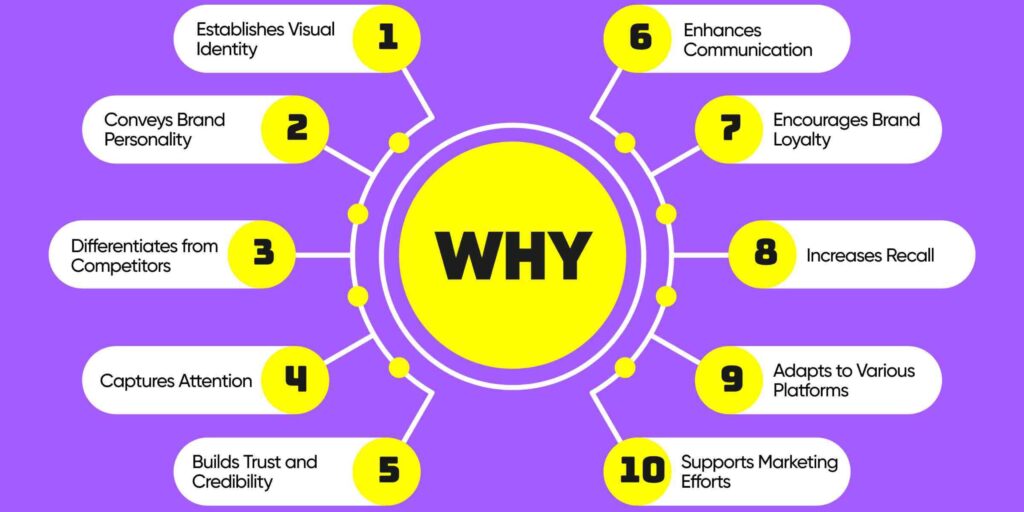
Graphic Design Skills is no longer a niche skill that creative professionals alone use. It has become an important tool for marketers and entrepreneurs alike. In the digital world where the internet is flooded with information and brands are fighting for consumer attention, a strong visual presence can make or break a business. It matters whether it’s a social media post, an advertisement, a website, or product packaging; the power to create or understand good design is quintessential to success.
Here’s what made graphic design the need of the hour for marketers and entrepreneurs. From brand identity to engagement and conversion, let’s look into what role design plays in business and how development leads to the boosting of marketing efforts.
Role of Graphic Design Skills in marketing
Graphic design represents the art and practice of creating plans and projecting ideas and experiences in visual content. To marketers, it means the communication of a message clearly and attractively to capture the audience’s attention to, in the long run, persuade them into action.
1. Building a strong brand identity
A brand’s identity constitutes a unique factor that separates the brand from its competitors and allows it to be more easily identified by consumers. Graphic Design Skills is pivotal in creating such an identity as it ensures consistency in all visual elements like logos, color schemes, typography, and imagery. A logo is the face of a brand, and if it’s well-designed, it does not only leave an impression but also fosters trust among consumers. In addition, an appropriate color palette and font style evoke emotions congruent with the message of the brand.
A marketer or entrepreneur who understands principles of graphic design can ensure consistency across all his platforms. The website, social media, packaging of products, or advertisements on billboards need to be consistently visual to portray credibility. People associate a clear brand image with professionalism, leading to higher loyalty towards the brand.
Strong visual branding further aids in improved customer recognition. Whenever a customer views a precise design again and again, he or she will recollect the brand more easily and connect with it accordingly. Visual repetition thus brings new customers but also increases the bonding with existing customers.
A weak brand identity design confuses and scares away potential customers. Therefore, marketers must either be able to master basic design skills or work with designers to ensure a strong brand presence
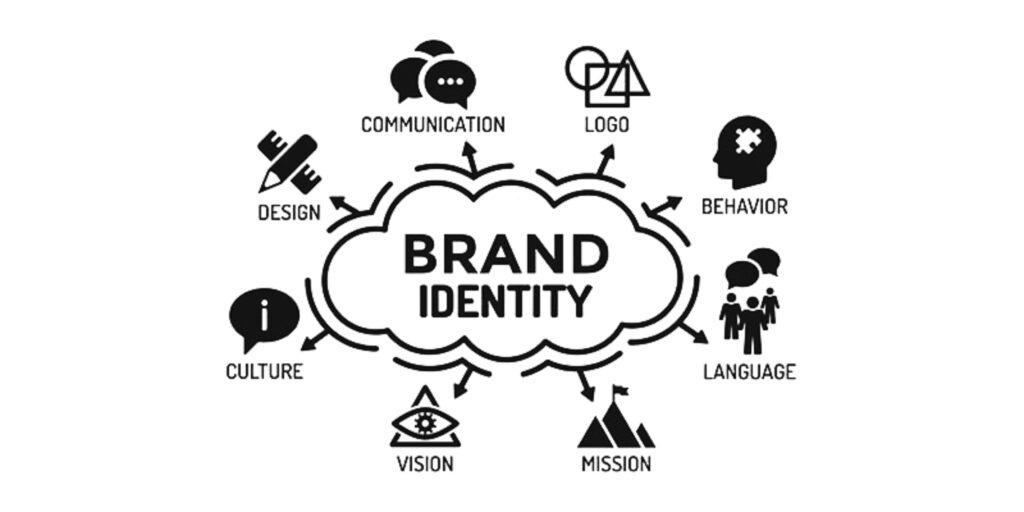
2. Building Visual Storytelling
Visual storytelling is indeed one of the most powerful weapons in marketing today, as an image is received much faster in the human mind than text; marketers who learn the principles behind Graphic Design Skills have the ability to create compelling stories that connect their audience emotionally and can be read quickly through a combination of storytelling through images and infographics to videos.
For example, the use of infographics will prove to be one of the perfect ways in simplifying a hard concept for understandable and easy presentation. With infographics, step-by-step guide, product feature, and statistics can all come alive for more people’s interpretation and understanding and can increase shares and engagements hence becoming the right tool in marketing on social media.
Brand imagery is another effective form of visual storytelling. High-quality images and videos allow businesses to showcase their products or services in an engaging manner. Instead of using long paragraphs to describe a product, marketers can leverage well-designed visuals that demonstrate its use, benefits, and unique selling points.
Visual storytelling again enhances brand messaging. When all marketing materials are in one style, color, and theme, it creates a brand experience that is always on the same level. Whether in email campaigns, advertisement, or social media posts, visually stimulating content makes a brand more memorable and persuasive.
3. High Impact Advertising
Advertising is the core of marketing, and how well an advertisement is designed to appear visually attracts a lot of customers. People in today’s digital world see thousands of ads through various means. To make their ad stand out, graphics should be strong and appealing, thus making graphic designers knowledgeable about their craft marketers create attention-grabbing ads.
A good advertisement combines elements of typography, color theory, contrast, and layout. The proper color scheme may elicit a certain emotion from the viewer, and the positioning of text may direct the viewer’s eye toward the message being delivered. Bright colors and large fonts can convey urgency in a sales ad, while softer tones and minimalist design are better suited for luxury brands.
Moreover, digital advertising—social media, search engines, and email campaigns—is very visual. A well-designed banner ad, social media post, or email newsletter can drive click-through rates and conversions up. Poorly designed ads are ignored or dismissed.
High-impact advertising is not just something that looks good, it’s about designing with a purpose. Every visual element should support the overall marketing goal, which might be to generate leads, increase brand awareness, or boost sales.
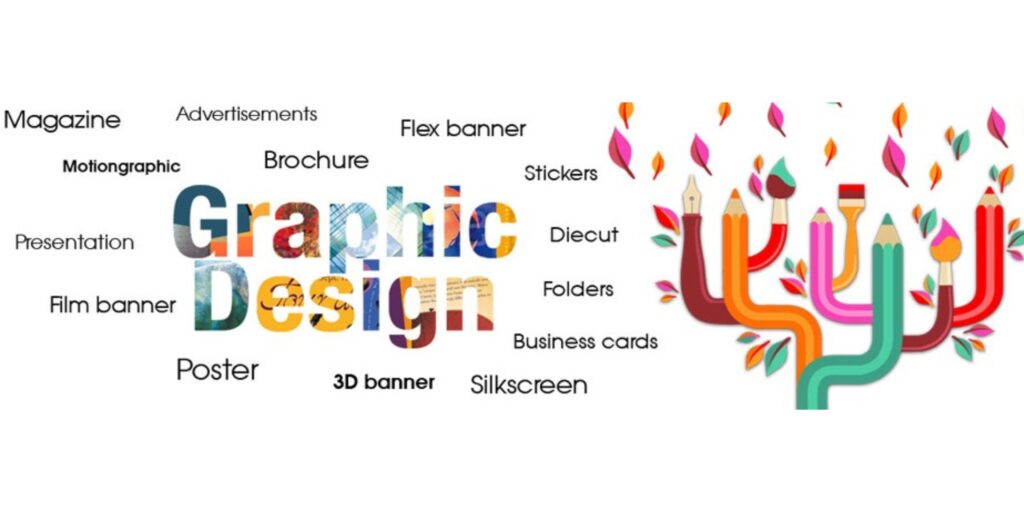
4. Enhancement of Web Design and UX
Basically, a website is the first encounter of a brand with its prospective customers. Horribly designed would result in an immediate loss of interest by the visitor. Consequently, graphic design forms the back bone of web UX: beautiful designs, easy navigation, and conversion-oriented.
With proper knowledge in UI and UX design, a marketer is able to generate a website with functionality and also visual attractiveness. These include the color considerations, type font choices, white spaces, and even the image placements on pages. If badly done, it hampers the reading experience as well, while otherwise it could be incredibly easy to navigate through.
A good website also increases credibility. If such a business has a site that looks very polished and professional, that brand will be trusted, and the visitor is going to purchase from it. In contrast, a poorly designed website with inconsistent branding, slow loading times, or confusing navigation will drive customers away.
Graphic design also enhances conversion rates. The design of a call-to-action button, banner, or landing page will determine how users will be led to desired activities, such as signing up for a newsletter or purchasing a product. An optimally designed website is therefore an essential tool for any marketing campaign.
The Benefits of Graphic Design Skills for Entrepreneurs
Effective visual content creation is not only a marketing advantage for entrepreneurs but also a time-saving and cost-effective skill. Let’s discuss some benefits of graphic design for entrepreneurs.
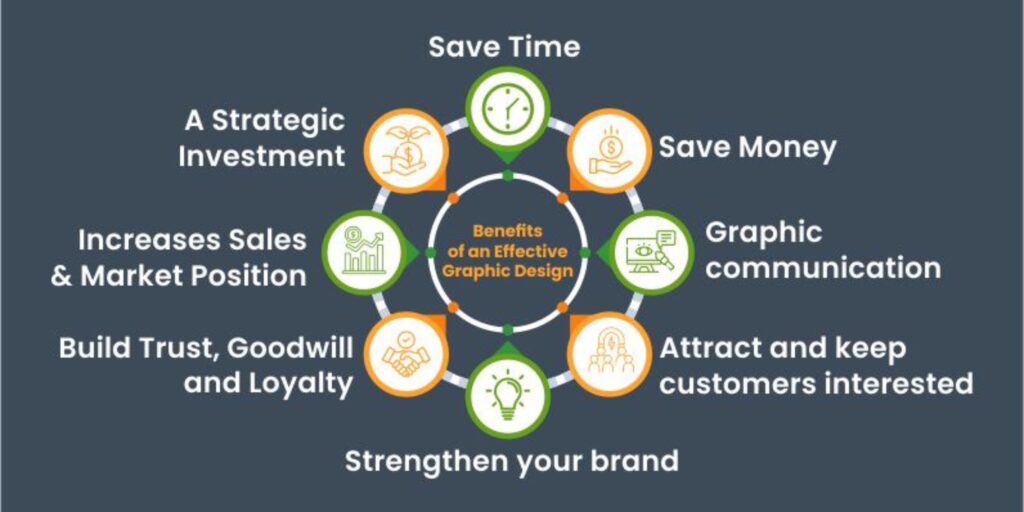
1. Cost Savings
The best graphic designers charge a pretty penny, especially to small businesses or startups. Still, knowing how to do simple graphic design on your own saves entrepreneurs the outsourcing cost of things like social media posts, email templates, and promotional flyers.
Entrepreneurs can make high-quality designs themselves, using tools such as Canva, Adobe Spark, and even PowerPoint. All these tools come with templates and user-friendly interfaces that make designing accessible to non-designers
2. Greater Professionalism
A business’s visual presence tells much about how professional it is. Entrepreneurs who develop marketing materials well-designed and clean are likely to be perceived by the potential customer as more professional and established.
Graphic design allows entrepreneurs to develop a host of marketing materials, from business cards and brochures to websites, on which their business will appear legitimate and competent to their audience.
3. Agility
In the rapidly changing world of entrepreneurial ventures, fast adaptation is fundamental. Graphic designers can adapt instantly to market demand or modify existing marketing materials while not depending on external designers if they are versatile. This ensures that entrepreneurs’ marketing strategy becomes agile and dynamic in responding to opportunities and changes
4. Consistency in All Platforms
Indeed, there are often several platforms or channels the entrepreneur must juggle in order to market their product or service, from social media and email campaigns to the website. In the event that the entrepreneur is not attuned with design principles, maintaining consistency across these different platforms will be challenging. If you are intersted in this blog then you have to check thi blog too. Best Graphic Design Course.
If entrepreneurs can understand that founding aspect of design, then they can bring all the visual elements that represent their brand, and push the core message in a way that’s consistent and coherent, regardless of the place.
How Graphic Design Skills Boosts Engagement
Graphic content is the most effective tool to heighten engagement and capture audience attention. In a world where everyone is bombarded with information, having such Graphics Design Skills tends to cut through the noise and make the content more interesting. Whether it’s a blog post, product page, social media update, or advertisement, strong design elements can significantly affect how an audience interacts with the content.
A good picture is one not only to gain attention but hold it long enough for the content to be transmitted. People remember images faster than words; the graphics, thus, provide more opportunities to have a message shared within seconds by elaborating very complex ideas on simple subjects like using vibrant colors, interesting types of fonts and proper structures.
Engagement is one of the main conversion keys for digital marketing. Posts with fabulous visuals get liked, commented upon, and shared more on social media, so the brand increases its visibility and reach. It can also promote email campaigns as well as the look of a newsletter, increasing open rates with good graphics.
Finally, the right graphic design is not just something that makes content look good but also influences the manner in which people feel about or relate to a brand. With strategic visual elements, businesses can potentiate messaging strength, user experience, and engagement level.
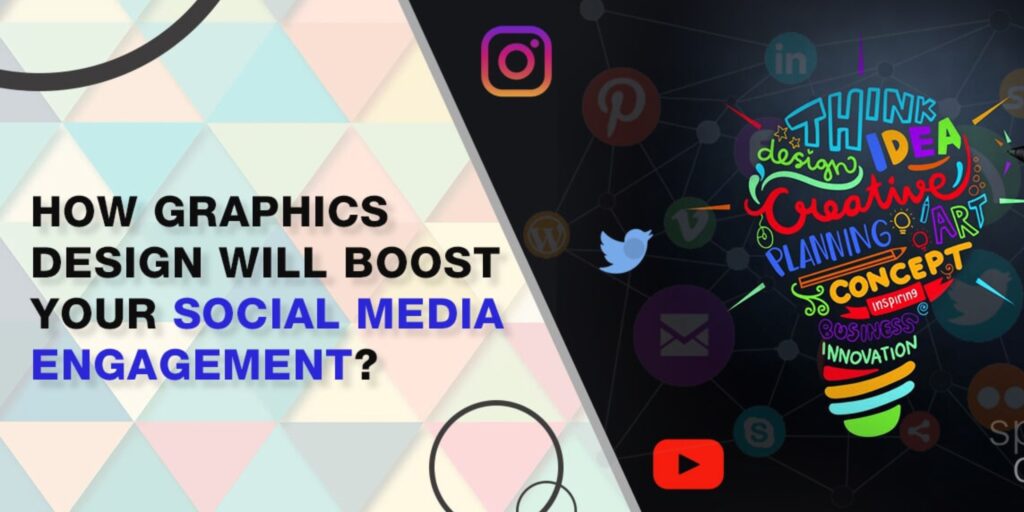
1. Grab Attention
Capturing attention is the first and most significant step into engagement in today’s rapid digital world. People often focus on visuals than on text. While a single well-designed picture or video can easily grab people’s attention, the use of an effective Graphic Design Skills will make sure your content stands out in a very crowded space whether for an advertisement, social media post, or blog graphic.
Elements like color, contrast, typography, and composition guide the viewer’s eye towards the most important parts of the message. For example, bright and contrasting colors can make elements “pop” more, and bold typography emphasizes important text. Proper alignment and spacing also ensure a clean and professional look-and-feel that is easy to read.
An image that is of great interest, first of all, attracts, but also manages to hold it long enough for the viewer to be encouraged into taking action. Design cues are subtly placed; these can range from directional arrows or highlighted call-to-action buttons to lead the user toward some form of engagement-be it further reading, a click on the link, or making a purchase. In a nutshell, strong graphic design means the best content may go unseen without it: visually striking designs stop the scroll and make a mark.
2. Greater Shareability
The more engaging and appealing the content is, the more it will be shared. Chances of your content going viral increase overwhelmingly if the content is properly designed with graphics. One interesting infographic or meme can get shared across multiple platforms, thereby creating effective exposure for the brand.
Graphic Design Skills makes content easier to digest and more enjoyable to look at, encouraging people to pass it along to their networks. Studies show that social media posts with images receive far more engagement than text-only posts. A well-crafted visual not only grabs attention but also makes information more accessible, which is why infographics perform exceptionally well.
This can be exploited by marketers and entrepreneurs through creating content specifically for sharing. More likely to be engaged is content with relatable, emotion-driven, or funny visuals. Branded graphics containing a logo or website link ensure that if the content is shared, the brand will not lose recognition.
The more your content is shared, the wider your organic reach becomes. This leads to increased visibility, higher engagement, and, ultimately, more potential customers discovering your brand. Good design isn’t just about aesthetics—it’s a tool for viral marketing success.
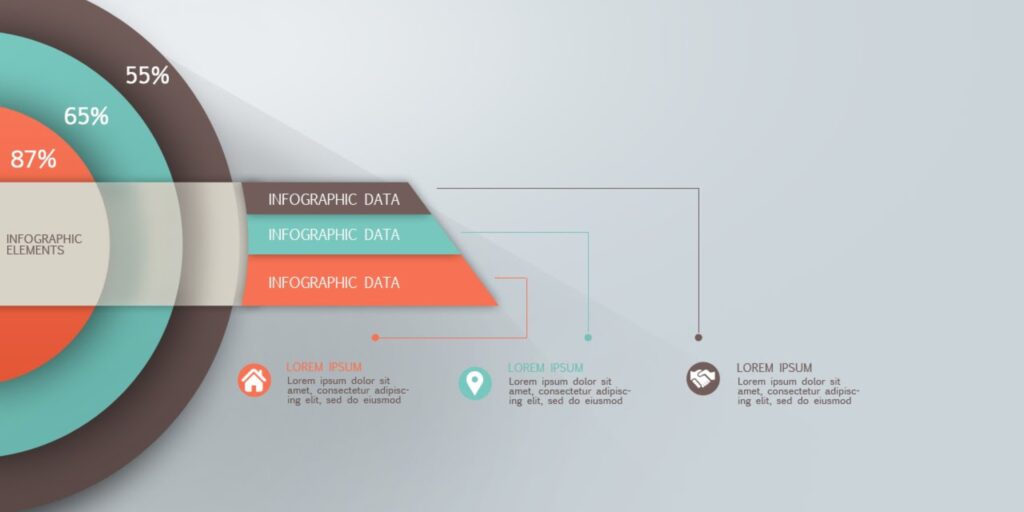
3. Conversion Rates Improved
Your design for your marketing materials really impacts the conversions. From landing page layout all the way down to a button design for call-to-action (CTA), everything has its influence on users interacting with content. Even smaller design changes make huge differences for improving engagement, thus increasing conversion.
An excellent example of click-throughs increased by a decently designed button for CTA, with some contrasting color along with clear and readable text saying “Buy Now” or “Get Started”, while an obvious website layout directing visitors smoothly along the information content without over-information leads to further engagement and then sales. There are pages whose poor design may be due to clutter or unclear text/visuals that make users avoid it.
Graphic design also has a very important role in email marketing. An eye-catching-looking email with well-structured communications, relevant images, and catchy CTA calls out for better open rates and click-through rates. In e-commerce, good quality product images, well-organised typography, and aesthetic pleasing experience while shopping can lead to better sales performance.
Finally, it is only through an understanding of design principles that marketers and entrepreneurs are able to optimize visuals in a way that will improve user experience, build trust, and increase conversions. A better engagement and revenue result from a well-designed digital presence.
The Future of Marketing and Graphic Design Skills
As technology advances, so does the demand for high-quality Graphics Design Skills. With artificial intelligence and automated design tools, there would be more chances for marketers and entrepreneurs to create visually compelling content without the need for deep knowledge of design.
With the rise of automation tools it is still essential for marketers and entrepreneurs to understand the basic concepts of design. While AI can potentially churn out rapid straightforward designs it is incapable of presenting creative intuition or strategic thinking that a human with this knowledge can bring to the table.
Graphic design is one of the most important skills marketers and entrepreneurs need to have. Building a brand identity, improving user experience, increasing engagement, and boosting conversions all depend on good design.
Entrepreneurs who make time to develop their design skills, whether they learn the basics themselves or partner with skilled designers, will better be able to navigate the shifting digital landscape and differentiate themselves in a competitive business environment.
With graphic design as an integral marketing tool, marketers and entrepreneurs will be able to create more effective, professional, and engaging content that resonates with their target audience and propels business success.
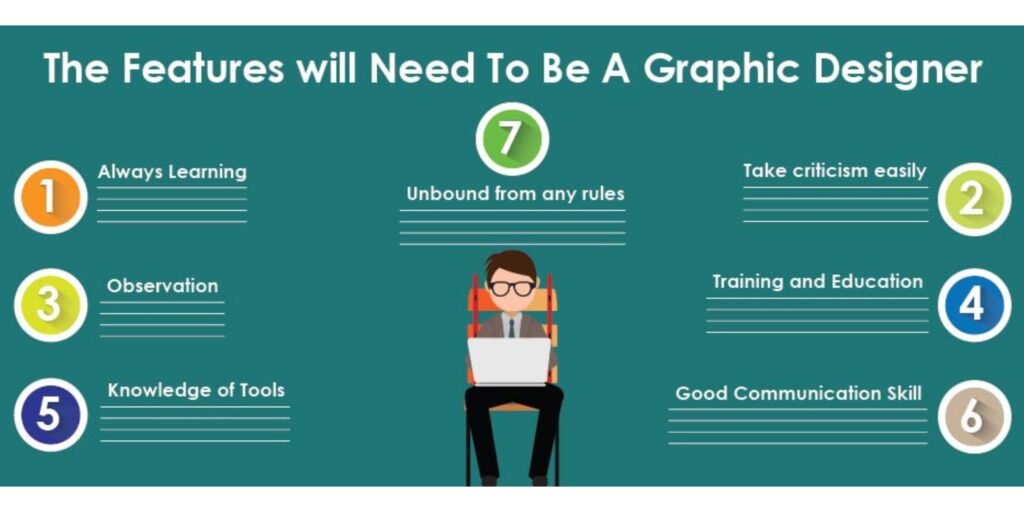
The Importance of Graphic Design for Non-Design Professionals and How a Basic Course Can Help
In the fast-paced digital world of today, much of what is communicated has to be visual. If you are a marketer, entrepreneur, educator, business owner, or, for that matter, an aspiring student, understanding Graphic Design Skills basics brings with it so many built-in advantages. While large-scale professional designers specialize in extraordinary visuals, non-design professionals frequently find themselves needing to design marketing materials, presentations, or social media graphics.
It would be very useful to you, even though you are not a full-time designer, if you take a basic graphic design course. The course will teach you the basic knowledge and skills necessary to develop beautiful and functional designs. This blog post aims to discuss why graphic design matters for non-design professionals and how learning the basics can enhance your career and business.
Why Graphic Design Skills Matters for Non-Design Professionals
1. Enhances Communication
Graphic design is a visual communication that may help convey a message more effectively than text. Whether it’s a business proposal, a social media post, or an email campaign, well-designed visuals capture attention and make information easier to understand.
For example, with an infographic designed properly, one will find data, which at first seemed hard to understand for the audience. Similarly, well-planned presentations keep your target audience interested in your talk, so they’ll remember things longer.
2. Increases Brand and Credibility
Business and entrepreneurial people know how important a professional brand image is to maintaining it consistently. A good-looking logo, a decent website, and other marketing materials make one’s brand seem trustworthy and, hence, appealing to customers.
Even though one is not a professional designer, knowing the graphics design basics lets you produce congruent and professionally designed images and graphics which convey your brand personality. Thus, your business has a professional appeal on all other platforms.
3. Saves time and money
It may be costly and time-consuming to hire a professional designer for every minor design task. A non-design professional can simply create simple graphics without consulting a designer if he or she has basic skills in graphic design.
For instance, if you need to create and print a flyer for an event or to create a great post on social media, the knowledge of how to work with a tool like Canva, Adobe Spark, or Figma saves you money and time.
4. Great Marketing and Social Media Engagement
Obviously, social media in the modern world employs a lot of visual material. Posts with images or graphics have much more engagement than a mere text-based post.
If you are in marketing, sales, or any other position with promotional activities, then having elementary design skills will basically help to come up with interesting visuals that are likely to attract much attention and engagement. Designing those cool Instagram posts, Facebook ads, or making interesting presentations on LinkedIn can really enhance your marketing strategy.
5. Better Presentation and Reports
Whether you are a corporate professional, a teacher, or a business owner, I bet you present and report to others quite often. A nice PowerPoint presentation or report is bound to catch your audience’s eye to your data and ideas.
Some basic knowledge about graphic design would help you make the right decisions on colors. Fonts, and layouts that appeal to the viewers and make presentations easy to read.
6. Encourages Creativity and Innovation
Learning graphic design encourages creativity, which can be applied to many aspects of your personal and professional life. It enables you to experiment with different visual elements, think outside the box, and come up with innovative ways to present ideas.
How a Basic Graphic Design Skills Can Help
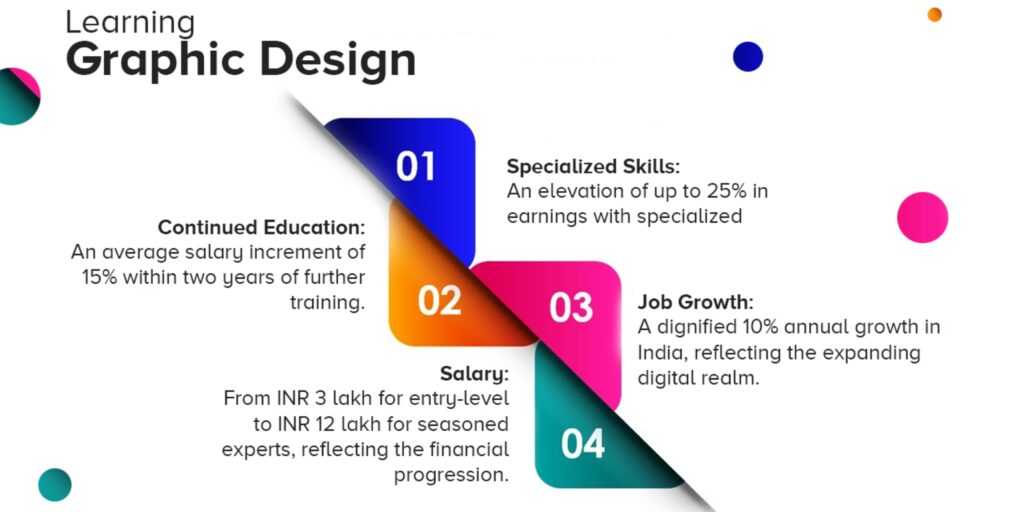
1. Understanding Design Principles
A basic course on graphic design will give you the main principles of a design. Such as balance, contrast, alignment, repetition, proximity, and hierarchy. These rules will help you make sure the designs you are going to produce are aesthetically pleasing yet can communicate well a message intended.
2. Knowing How to Use Design Software
Most people would not dare touch graphic design; it is far too intimidating as a result of the design application. A short course will have you learning use-friendly tools to include Canva, Adobe Spark, and using Photoshop, Illustrator, and even Figma very easily. One can create commercial-grade designs and not need school for it.
3. Color Theory and Typography
Colors and fonts create a difference for how one would perceive the final design. Most basic design trainings cover psychology of color as well as a way to develop harmonious palettes. Knowing what kind of font would complement a message with the identity of the brand would also be developed.
4. Designing social media images, which will cause attention
Since social media is a crucial marketing tool for businesses and professionals. A design course will often include lessons on creating engaging visuals for platforms like Instagram, Facebook, LinkedIn, and Twitter. You’ll learn how to design posts, banners, and ads that attract attention and drive engagement.
5. Designing Presentations and Marketing Materials
You’ll learn to create professional presentations, brochures, business cards, flyers, and email templates in a class. That is such an understanding as useful for non-design professionals in creating best-productive materials enhancing their brand as well as communication.
6. Hands-on Experience
Most courses in design involve practical assignments which allow you to work on real products, receive constructive feedback, and hone your skills. It’s very valuable and enables you to test what you learn immediately.
7. Improved Coordination with Professional Designers
If you’re not going to design full-time, knowing graphic design basics can help you coordinate and communicate with professional designers much better. You will give better feedback, understand terms in design, and work with a designer better.
Choosing a Graphic Design Course
Here are some criteria that you need to consider when choosing a graphic design course:
Newbie-Friendly Curriculum: Design a course that’s targeted towards non-design professionals. Taking care to cover the most basic material without making too many assumptions.
Hands-on projects: Consider a course with practical assignments for you to try out what you learn.
Tools easy to use: Attend courses that teach easy-to-use tools like Canva, Figma, or Adobe Spark.
Online/ In-person: Depending on when you are available, go for self-paced online courses or instructor-led courses.
Affordable pricing: Most of the websites offer free or low-cost courses on design. This makes it accessible to anyone.
•Some popular platforms offering beginner-friendly graphic design courses include
•Coursera (Graphic Design Basics by California Institute of the Arts)
•Udemy (Canva for Beginners – Create Amazing Designs)
•Skillshare (Graphic Design Essentials for Beginners)
•LinkedIn Learning (Graphic Design Foundations)
Unlock your potential—master Graphic Design Skills today and elevate your marketing game!
Conclusion:
Graphic design is no longer something that is practiced by only the professional designers. In a very visually-driven world today, most non-designers will gain greatly through the foundational knowledge on how to work in design. For a business owner, marketer, educator, and entrepreneur, this will allow for better forms of communication, branding, marketing, and general productivity.
It would provide you with the basic graphic design skills, making your visuals attractive, save you dollars from outsourcing, and make you stand out professionally. Now is a perfect time to learn and tap into the powers of graphic design because of the vast number of beginner-friendly online resources available today. With your investment in basic graphic design skills, you have an impact on your career and business as well as all the creative potential of yours


